When I visited South America a few years ago, I was amazed at the continent’s diverse wildlife. I knew that there would be plenty of insects and spiders, but I didn’t realize how many large animals I would see. In this post, I present some of the largest animals found in South America.
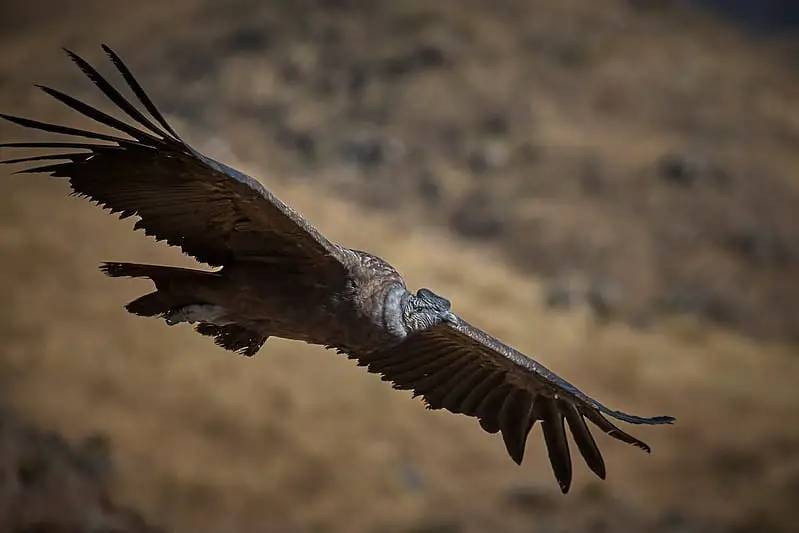
Andean Condor
The Andean condor is not only the largest bird in South America but also in the world. They have a wingspan of 3 meters and a length between 1 and 1.3 meters. Their large wings allow them to carry their body weight of 15 kgs up to heights of 7,000 meters. The Andean condor prefers areas with strong thermal air currents and updrafts to conserve their energy when gliding.
The Andean condor is not a raptor and feeds on carrion, including the carcasses of deers, cows, and sheep. They eat whenever they feel they need to and can eat large amounts. A fully grown Andean condor can eat 5 kgs in one sitting, up to a third of its body weight.
The Andean condor can be found in South America in Argentina, Chile, Colombia, Peru, and Venezuela. They live in various habitats, ranging from mountains, deserts, grasslands, and along coastlines. They have no natural predators as adults. However, chicks and eggs do get eaten by foxes and birds of prey.
There are 6,700 Andean condors left in the wild, with over a third living in Argentina.
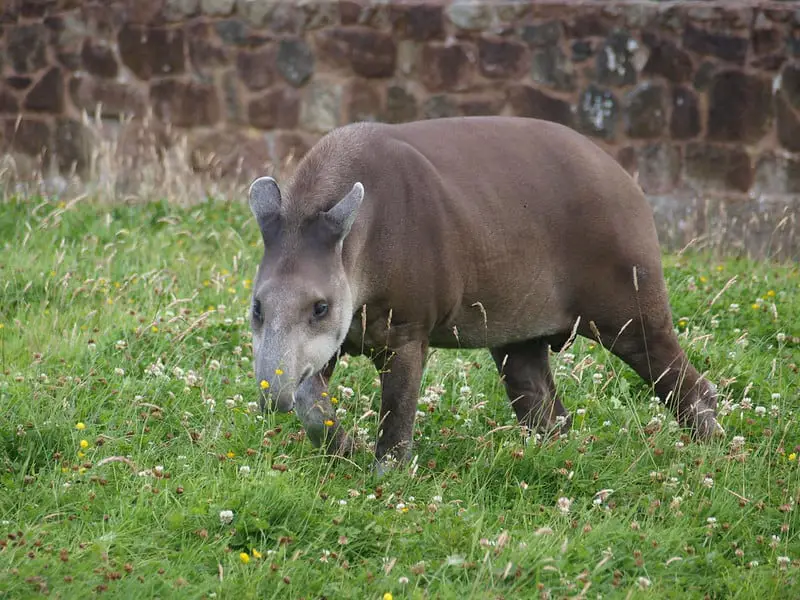
Tapir
Although the same size and shape as a giant pig, the tapir is more related to a horse or a rhino. They are the largest land mammal in South America. The tapir is about 1 meter tall and 2 meters long, with a weight of up to 300 kg.
Tapir is mainly recognised by their long proboscis, which they use to grab leaves, fruit, and aquatic vegetation. Tapir can stay underwater for several minutes and use their long nose as a snorkel when near the surface. They spend a lot of their time in the water to get away from the jaguar, their main predator. Tapirs can live up to 30 years in the wild.
Tapir is one of the oldest living mammals, known to have been around since the Eocene Epoch, lasting from 56 to 33.9 million years ago.
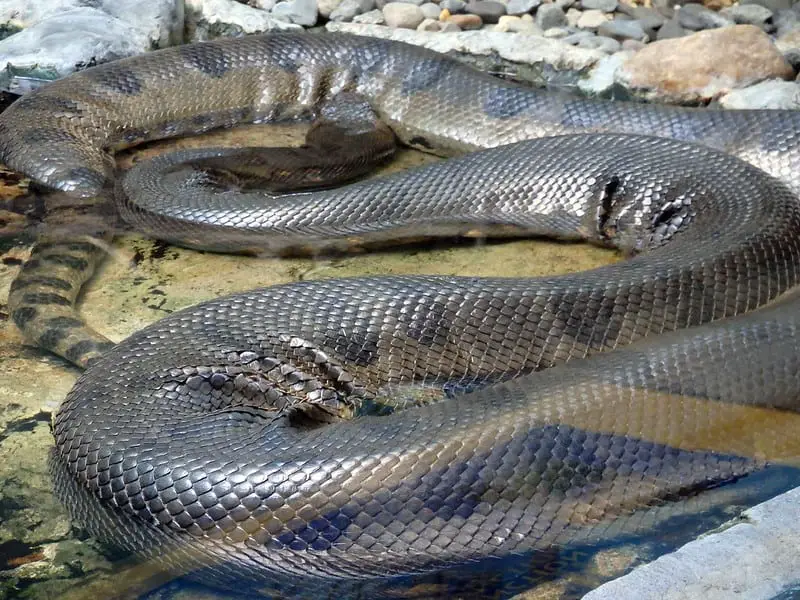
Green Anaconda
Although there are four anaconda species, the green anaconda is the biggest and heaviest snake in South America. They are only second in length to the reticulated python, which lives in Asia. The anaconda can reach lengths up to 11 meters long, although they generally reach about 5 meters. Their weight has been recorded up to 227 kgs, although most usually weigh about 135 lbs.
The green anaconda can be found in South America in Bolivia, Brazil, Colombia, Ecuador, and Venezuela. They can be found in waterways, streams, and marshes. They are hard to spot for such big animals as their nostrils and eyes are on top of their head. They will lay underwater with just their heads on top of the water, waiting for their unsuspecting prey.
The green anaconda is not venomous but is a constrictor. They wrap their body around their prey and squeeze until they feel the heartbeat stop. Anacondas eat their prey whole, sometimes taking hours to swallow large prey. They have a fantastic adaptation where their windpipe gets pushed out of the mouth, allowing them to breathe while consuming large animals. They give birth to live young, with broods of up to 40 young, which can instantly fend for themselves.
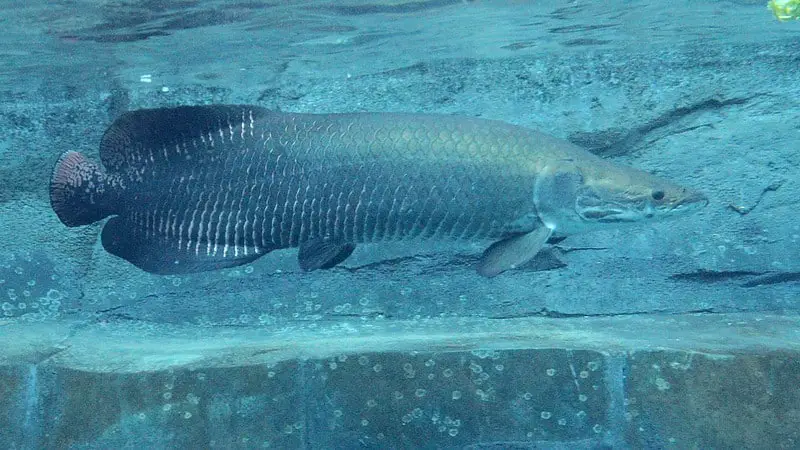
Arapaima
The arapaima is one of the largest freshwater fish in the world and the largest in South America. The arapaima can reach lengths of up to 3 meters long and weigh over 200 kgs. However, most weigh up to 100 kgs with a length of 2.2 meters. Their scales are large and armour-like. The scales are regularly used for jewellery in South America, and their bones are used for pipes.
The arapaima can be found in waterways with low oxygen, and they have a unique adaptation that allows this. Arapaima has a primitive lung used to breathe air in conjunction with gills to breathe underwater. Whereas most fish will suffocate and die when trying to breathe out of the water, the lung allows them to breathe in low-oxygen water. Unfortunately, because they breathe at the surface in shallow waters, they are also easier to catch.
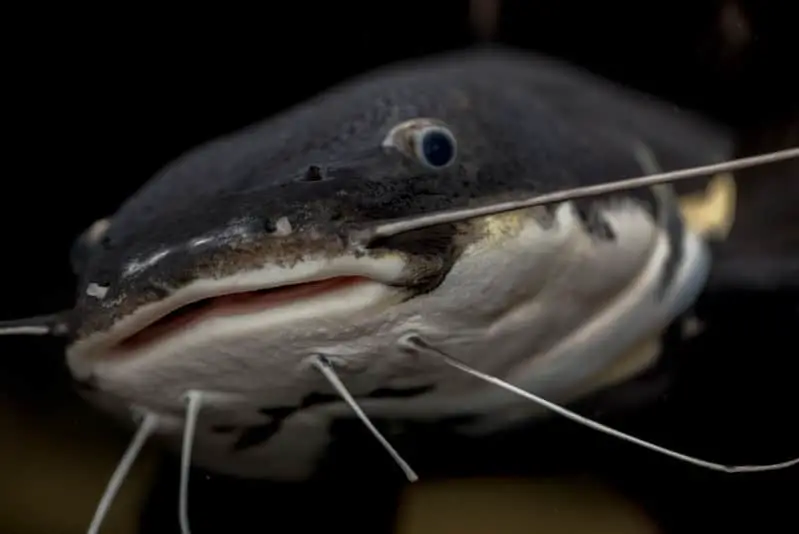
Piraiba
The piraiba is a large species of catfish that can be found in the rivers of the Amazon and Orinoco basins and grows up to 3.6 meters. They can weigh more than 150kg and easily outweigh many humans. They can be found in deep water areas, both freshwater and brackish water.
There are legends of the Piraiba being a man-eater, and although some individuals are large enough, they are piscivores, eating mainly fish. They have white undersides with dark grey to black uppers. They have spiky dorsal fins, and this, along with their huge size, has had people mistake them for sharks.
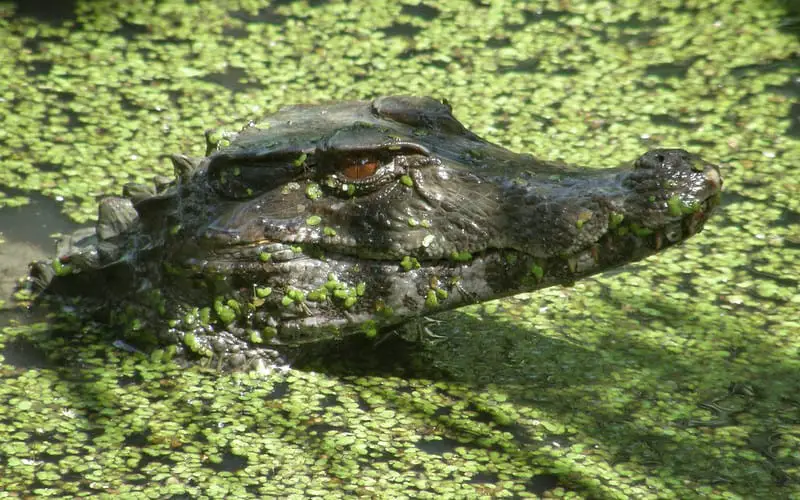
Caiman
Although smaller than crocodiles and alligators, the black caiman is still one of the largest animals in South America. The black caiman grows up to 4 meters and weighs 400 kgs. Black caimans have very few predators, although two others on this list, the green anaconda and the jaguar, will prey on smaller specimens.
Caimans are predators and prey on small mammals, insects, and reptiles, although their main diet consists of fish. Their diet consists mainly of catfish and perch. They live in rivers, lakes, swamps, marshes, and mangroves and prefer slow-moving water. They live in Argentina, Bolivia, Brazil, Paraguay, Peru, and Uruguay.
Caimans resemble alligators with the same u-shaped snout, while crocodiles have a v-shaped snout. All are different species but are related. There are six species of caiman in South America, including the black caiman, broad-snouted caiman, Cuvier’s dwarf caiman, Jacare caiman, and Schneiders dwarf caiman.
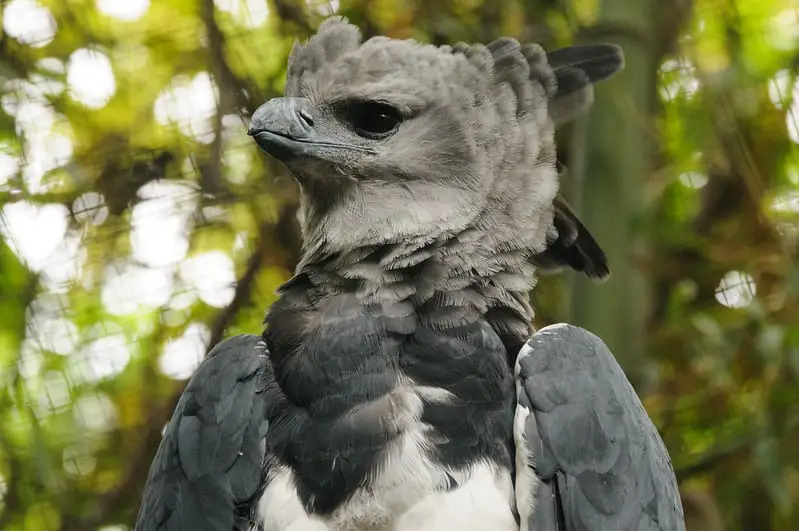
Harpy Eagle
The harpy eagle is one of the largest eagles in the world. They can measure up to 3 ft 6 inches in length with a nearly seven and a half feet wingspan. They can weigh up to 10kg, although this is less for most wild eagles. As a result, the harpy eagle is the heaviest bird of prey. Females are larger than males, making them easier to distinguish as they have identical plumage.
They have black feathers with a white underside and black stripes along the lower legs. Their heads are light-grey with a double crest. The crest is shown when the bird feels threatened. They can be extremely dangerous with their hooked beaks. They also have talons that are longer than brown bears.
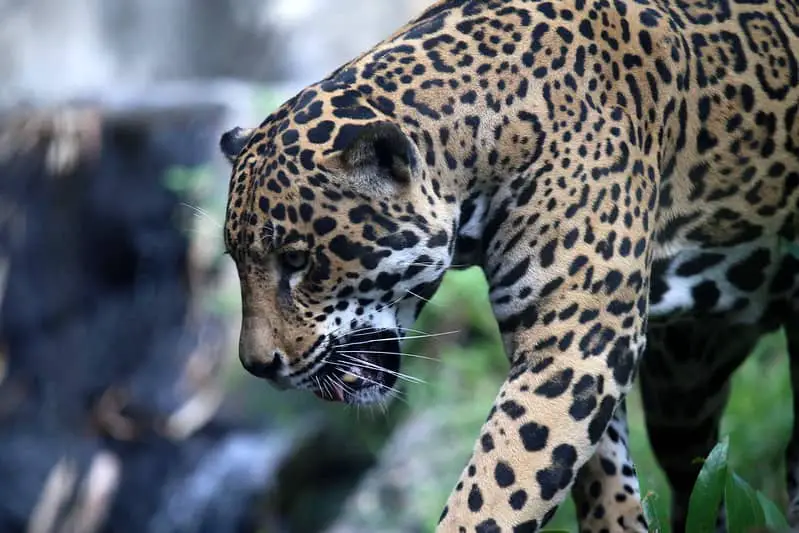
Jaguar
The jaguar measures just over 6 feet and is the largest cat in South America. Only lions and tigers are larger in the rest of the world. The jaguar weighs up to 100 kg, although some huge individuals have weighed more than 150 kg. Females are smaller and lighter than males.
Jaguars have coats of yellow or tan with spots called rosettes. The rosettes are rose-shaped, with thick lines and a spot in the middle. The rosettes are used to camouflage the jaguar among the vegetation. Black jaguars have also been spotted in South America, although less common than spotted yellow individuals.
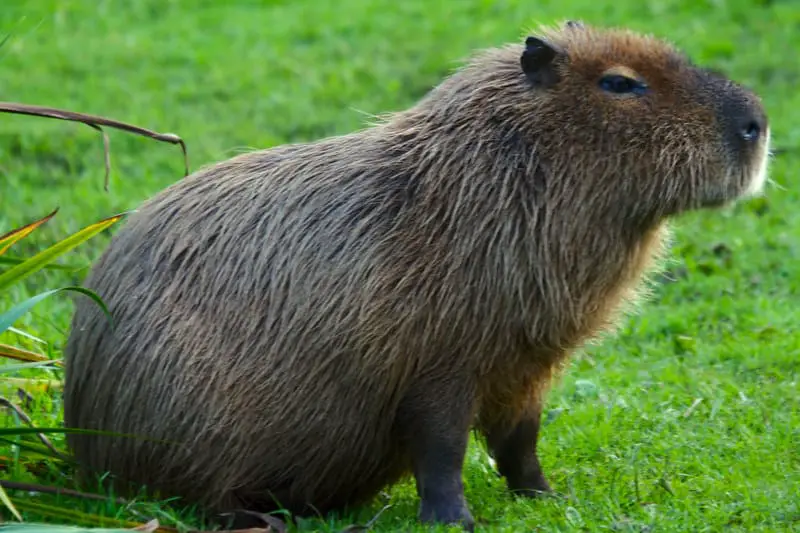
Capybara
The capybara is the largest rodent on Earth. They grow up to 1.3 meters long with a height of over half a meter and can weigh up to 66 kgs. They are very social animals and can be found in groups of up to 100, although smaller groups are more common.
They are related to guinea pigs and cavies, which they resemble. They have long fur, which is reddish-brown. The capybara can be found throughout South America except for Chile due to the habitat. Capybaras are semiaquatic mammals and prefer habitats with plenty of water. They live in swamps, rivers, ponds, and lakes and are excellent swimmers.
They can hold their breath for up to five minutes underwater, allowing them to get away from their many predators. Although they can run up to 35 kilometres an hour, they are still at risk from caimans, eagles, jaguars, and eagles.
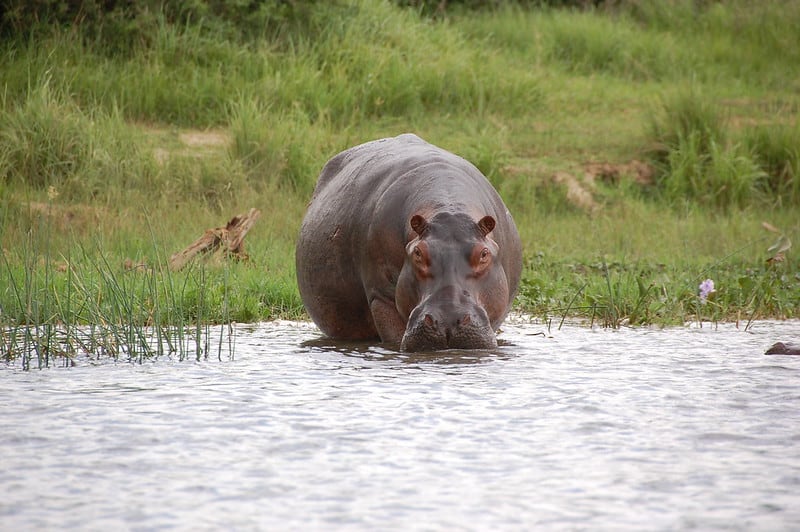
Hippopotamus
Although the hippopotamus is not the first animal you might imagine when thinking of the animals of South America, there are thought to be up to 120 of these in Colombia. They are not native to South America, but Pablo Escobar, the notorious criminal, imported three females and one male to his private zoo. In 1993, there were only four, but their numbers have significantly expanded since then. Scientists have advised that there could be up to 1,400 hippos in Colombia by 2034, which could cause irreparable damage to the local wildlife such as manatees and fish.
Hippos can weigh up to 1,800 kg and have no known predators in South America. Although most of the 120 live around the existing area of Pablo Escobar’s property, some have been found up to 370 km away. Hippos are protected in Colombia following a public outcry after the Colombian army shot a hippo named Pepe in 2009.
Hippos are the most dangerous animals in Africa. Find out why in this article I wrote

